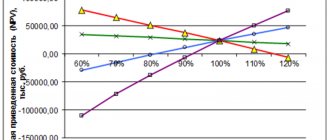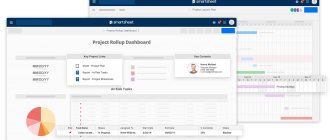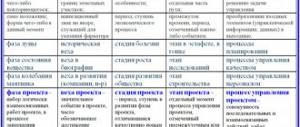What is profitability: definition
Profitability is an indicator of business efficiency from a financial point of view. That is, how quickly the investment will pay off, what profit the business can expect, and what needs to be done to increase it.
For example, if an entrepreneur opened a company and it generated income in the first quarter of operation, then the business is profitable.
It can also be defined as the ratio between investments in production and the profit received.
That is, profitability is the economic efficiency of a business. Only by calculating it can you understand whether an enterprise or company will generate money in the future and whether there are prospects.
What it is?
Literally, profitability is the level of economic benefit, characterized by the profitability of the company.
A correctly constructed calculation algorithm allows you to understand how objectively and profitably all the resources owned by the company are used. For example, labor capital, financial assets, economic and natural resources.
Example
The cost of the manufactured product is 200,000 Russian rubles.
Net income for the reporting period is 20 thousand rubles.
The company's profitability reaches ten percent.
In other words, for every ruble invested, the company receives ten kopecks of net income. If the calculation of profitability is carried out in a non-profit organization, then the efficiency of work will be determined.
But if the calculation is made for a commercial organization, then profitability serves as a qualitative and quantitative characteristic of its activities.
This ratio can be compared with the ratios of total profit and general expenses of the company. In other words, the ratio of a company's waste to its bottom line profitability.
If, at the end of the reporting period, the company recorded a net profit (after deducting tax payments and the cost of selling the product), the company is considered profitable.
Why calculate profitability
It is calculated because it is the main indicator when analyzing any business. It helps to understand how quickly and within what timeframe the initial investment will be returned, and is used when creating a business plan for a future enterprise.
Pricing also depends on the profitability indicator.
The resulting cost-effectiveness number can be presented as percentages or coefficients.
The latter are needed in the following cases.
- To analyze the profit that a business can expect in the period of interest.
- To analyze competing market players.
- To justify high initial investment and investment for investors.
- To get the exact value of a business before selling it.
- To obtain credits, borrowings and start producing new products or providing services.
How to calculate?
Tracking the current state of an enterprise and monitoring the profitability of its activities is a common practice throughout the world.
For successful business development, it is not enough just to have an intuitive understanding that a project will bring profit; it is also necessary to conduct a mathematical analysis of the objective state of the market, calculating the return on the implementation of the project (product) and its payback period.
The current level of product profitability is calculated based on real data, which is reflected every month in the accounting documentation of the enterprise, as well as quarterly reports.
Calculating profitability is of interest to a wide range of people:
- business owners who evaluate the correctness of the “laid course”;
- creditors who monitor the economic situation of the enterprise.
The profitability of the enterprise is considered as an absolute value, thus it is easy to represent it in the form of cash (in the accounting report).
When using relative profitability indicators (ratios of absolute values that are expressed as a percentage of each other), it is necessary to give some explanations.
Relative indicators are not so demonstrative. The product profitability ratio (in its general form) demonstrates how many units of profit a businessman will receive from a unit of production costs.
The profitability ratio is written as a fraction, where the numerator is the profit earned in the process of selling the product, and the denominator is the total costs related to both commercial promotion and the technological production cycle.
The calculated coefficient must be multiplied by 100. Thus, the proportion shows the ratio of profit to total cost (full production costs).
It is important to understand that a single calculation of product profitability cannot reflect the real state of the enterprise. When conducting a comprehensive analysis, the following points should be taken into account:
- the difference between the actual and planned profitability of products sold;
- comparison of the data obtained during profitability calculations with competing firms for similar products;
- analysis of the company's product ratings over the past few years.
There are two main concepts in searching for the profitability of an enterprise's products.
Very often, profitability is calculated only for a unit of a product, then the costs of its production and the profit received from sales from the general structure are separated.
This concept is used primarily by analysts to make forecasts. The second concept for calculating profitability is to analyze the global situation. A study of the total amounts for the reporting period is carried out.
The profitability of goods production is always considered as a percentage. This makes it possible to simplify the further use of calculated indicators for conducting a comprehensive analysis of the enterprise in the long term.
Profitability of products sold (ROM - from English Return on Margin) is an indicator that shows the efficiency of product sales in the form of the ratio between income and costs for the production of goods and their sale.
Have you decided to open your own business? Then, first of all, we recommend starting with a business plan. How to write a business plan for an individual entrepreneur? Sample of writing a program step by step.
What business can you open with minimal investment and high income? Read here.
It is quite possible to open a business with minimal investment. Here https://businessmonster.ru/otkryitie-biznesa/biznes-idei/proverennyie-idei-dlya-malogo-biznesa-trebuyushhie-minimum-vlozheniy.html you will find information about proven ideas for men and women. Profitability in practice.
Types of profitability
Profitability can be:
- for goods, manufactured products or services provided. The costs of the project and its net profit earned for a specific period are taken into account. It can be used for the entire business or a specific offer.
- for business. Here, the basic indicators are taken as a basis, which help to understand how profitable they are. These calculations are made when an organization plans to attract investors. They are used by investors themselves when studying a specific business project.
- for assets. There are a lot of different indicators for calculations. They help determine the feasibility and rationality of using certain resources: investments, credits, loans.
Any type of calculation has the right to be used for internal purposes and external needs: for example, before attracting investors or obtaining a loan for business development or modernization of production.
The essence of the phenomenon
ROI is the yield or profitability of the project in question. Currently, it is often used to evaluate the activities of enterprises and companies. In this case, using the return on investment indicator, management can make a decision on the production of one or another type of product.
We are dealing with a universal indicator that is used to conduct a comparative analysis of any type of production and various types of investment projects. It is also known as return on capital employed in some financial sources.
Profitability indicators
The last thing you need to know before performing financial performance calculations is the indicators. Each type has its own designation.
- ROS - sales;
- ROE - capital;
- ROA - assets;
- ROL - employees;
- ROM - manufactured products;
- ROIC - investment;
- KROFA - company funds.
There are many more of these indicators than in the list. However, these are basic and are often used in calculations.
Now it’s time to move on to solving the main issue.
The role of internal rate of return
One of the most important indicators of the prospects of an investment project is the internal rate of return, which in international practice is designated as IRR. It represents the rate of return that is generated by a monetary investment. This is the size of the discount rate that ensures equality of present income and investment. In other words, at this value of the barrier rate, the current value of the investment is zero.
Knowing the IRR allows you to find out the maximum cost of money at which the venture remains profitable.
The calculations here are quite complex, so to find the value of such a discount rate, specialized programs (such as Excel) are usually used, or a graph is constructed showing the dependence of NPV on the discount rate. IRR is obtained as a discount rate at zero NPV.
If the internal rate of return is higher than the total cost of capital, then such an initiative can be considered, otherwise it is rejected. Let's assume that as a result of calculations, the IRR turns out to be 12%; therefore, with a weighted average cost of invested capital of 10%, the project seems profitable.
This criterion has its strengths and weaknesses. Its positive quality is the ability to compare initiatives of different sizes, as well as different durations. Disadvantages include ignoring reinvestment, as well as the inability to express it in absolute terms (in monetary units). In addition, for some values of the initial data, you can obtain several different IRR values or not be able to calculate it at all.
Profitability calculation: formulas
Calculation of enterprise profitability
It is calculated to obtain data on the level of economic efficiency of the entire enterprise. To obtain the necessary information, accounting data and financial statistics for a specific period are taken as the main indicators. The formula looks like this.
P= BP/SA*100%
Where:
P is the final profitability of the entire business.
BP - balance sheet profit. It is obtained by calculating available profit and cost until taxes are paid.
CA is the total average annual price of all assets that can be obtained from financial statements.
Return on assets
To get accurate metrics, you first need to determine the effectiveness of the assets used and their impact on the bottom line.
The lower the figure after calculation, the worse the assets perform. If this happens, then the company management needs to reconsider management tactics.
You need to constantly calculate your assets in order to immediately understand which of them do not bring money. After which you can think about abandoning these assets, leasing them or modernizing them.
The calculations do this.
ROA=P/A
Where:
P - profit for a specifically selected period of activity;
A is the average for assets for the same period. That is, profit is divided by asset indicators. This is a simple formula, but very useful for managers.
Return on fixed assets
This formula should also be used in the asset calculation process. Because here the initial data is taken from the means of labor involved in the production of products. That is, it is applicable for industrial and manufacturing enterprises.
Data is taken for more than 1 year and the amount of depreciation is taken into account.
What exactly does this include?
- Production facilities, warehouses, offices, workshops and laboratories.
- Industrial equipment involved in production.
- Transport: loaders, dump trucks, tractors and other equipment, as well as cars, buses, minibuses, etc.
- Furniture: office, workplaces, warehouses and utility rooms.
- Tools involved in production.
The following formula is used here.
R = (PR/OS) * 100%
Where:
PE - net profit for the selected period.
OS is the basic price of business funds.
Project profitability
By creating a project, a businessman expects that it will expand, begin working in new directions, and thereby increase the final profit.
Investors also need to understand where they are investing their money. To do this, they conduct an analysis to determine the effectiveness of the project and coordinate investments in it.
Calculation examples
To understand the process of calculating the profitability indicator, let's look at a few simple real-life examples.
Let’s say the total revenue received from the sale of goods from an enterprise producing baby diapers over the past month amounted to 500 million rubles. The cost of production of sold products (including costs of commerce and administrative personnel) is 265 million rubles. Determine the profitability of the products that the enterprise produces.
First, let's find the profit from the sale of goods for the past month.
To do this, we subtract the full cost from the total revenue: 500-265 = 235 million rubles.
We will find the profitability of products using the calculation formula: PR/TS*100, where PR is the profit from sales, TS is the total cost of production costs.
Let's substitute the values: 235/265*100%=88.68%.
Profitability of product sales shows how much profit the company receives from each ruble of products sold. In our case, the profit is 88.68 kopecks. This is a fairly high profitability of the product. By analyzing the product profitability indicator, you can assess the competitiveness of a company in the market to promote new products. If the profitability of a product falls, this indicates a decrease in demand for the company's products or low production efficiency at the plant. The profitability indicator can also be calculated for several products that form a specific product group at the same time.
Let's look at the second example.
The company produces three types of products with an average profitability of 26%. Sales revenue and cost for each product are presented in Table 1. It is necessary to find the profitability for each product and give recommendations to the company regarding the further production of products.
To calculate the profitability of products, we will use the formula from the first example.
Profitability of commercial products. Formula: “A” = 9/27*100%=33.3%;
Profitability of product “B” = 8/22*100%=36.36%;
Profitability of product “B” = -1.89%.
If we analyze the absolute value, then product “A” brings more profit than “B”. However, in reality, “B” is 3 kopecks more profitable (3.06%). Thus, the company needs to focus on producing product “B”. Regarding product “B”, it should be said that this product is unprofitable, i.e. brings a loss. Accordingly, the production of product “B” must be stopped immediately. The loss for each ruble of costs is 1.89 kopecks.
Finding start-up capital is a pressing problem for every beginning entrepreneur. Lending will help you start your own business. We implement small businesses in practice using bank capital.
You will find ideas and options for starting a business from scratch in this section.











